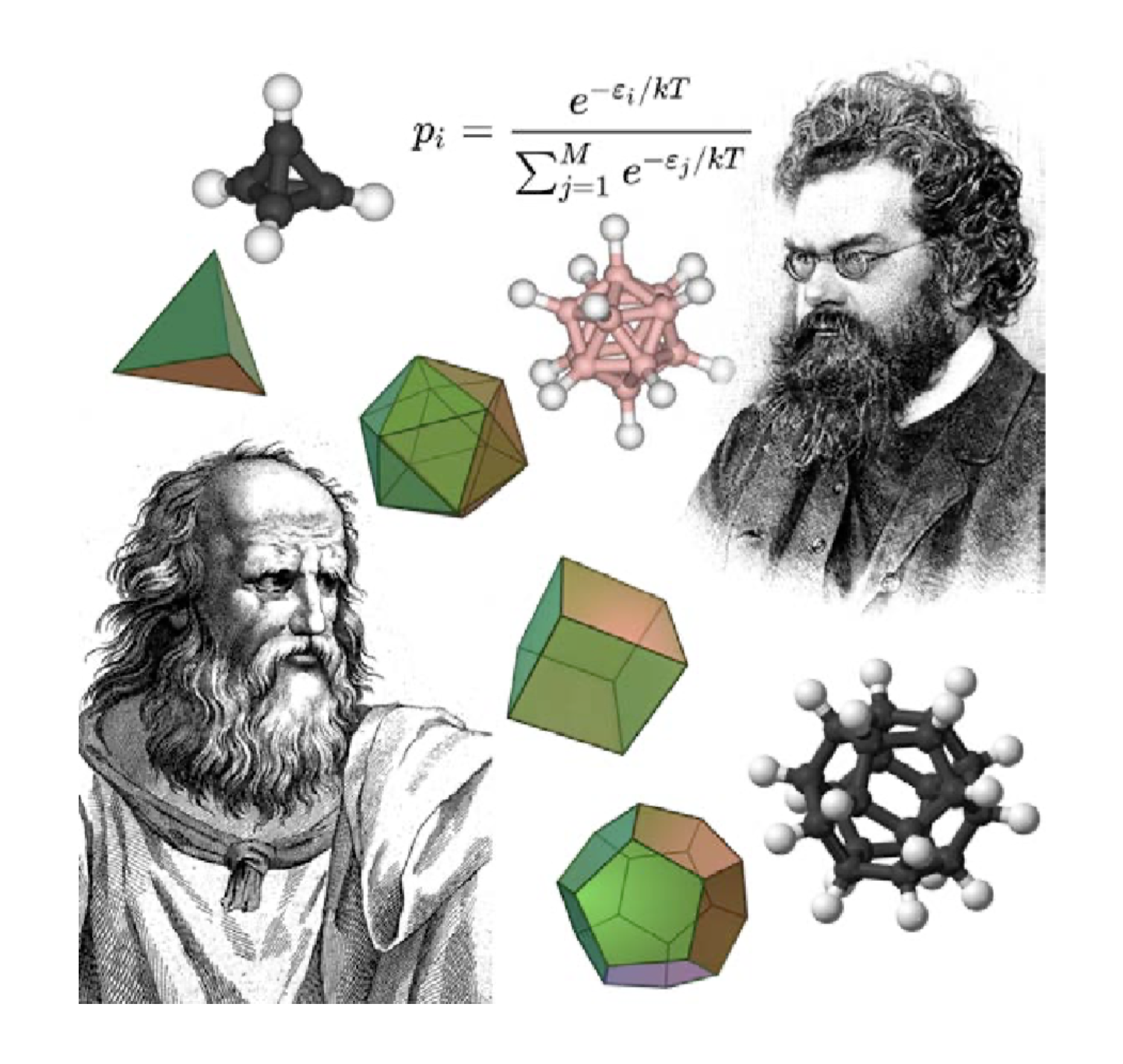Effects of temperature on the shape and symmetry of molecules and solids
A. Carreras, E. Bernuz, X. Marugan, M. Llunell, P. Alemany.
Chem. Eur. J. 25 (2019) 673-691.

How does temperature change the shape of molècules? Bridging the gaps between Plato and Boltzman using continuous shape measures.
Despite its undeniable problems from a philosophical point of view, the concept of molecular structure, with attributes such as shape and symmetry, directly borrowed from the description of macroscopic objects, is nowadays central to most of chemistry. Following this trend, descriptions such as “the tetrahedral” carbon atom are widely used from elementary textbooks to the most up-to-date research articles. The definition of molecular shape is, however, not as simple as it might seem at first sight. Molecules don’t behave as macroscopic objects do due to the incessant motion of its constituent particles, nuclei and electrons. How are molecular shape and symmetry affected by this thermal motion? In this review we introduce the language of continuous symmetry measures as a new tool to quantitatively describe the effects of temperature on molecular shape and symmetry.
